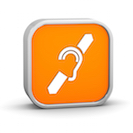Bridging the Communication Divide: CMC and Deaf Individuals’ Literacy Skills
 Deaf individuals frequently capitalize upon communication technologies that increase equitable access to communication in an ongoing, effortless manner. Those communication technologies create conditions that increase direct access to language and literacy. It is the lack of direct access to language that has been historically problematic for deaf individuals, contributing to English literacy achievement gaps that are evidenced in deaf education settings. This study explored the hypothesis that increased access to English through communication technologies would be related to stronger English literacy skills for deaf individuals. A secondary analysis approach using a longitudinal large-scale dataset, the second National Longitudinal Transition Study (NLTS2), was used to assess the frequency of computer-mediated communication as a predictor of English literacy skills in a sample of 510 deaf youths in the United States. Regression analyses demonstrated that deaf adolescents who e-mailed or chatted more frequently exhibited higher reading comprehension skills in the years ahead. These results suggest that communication technologies should be further explored as a potential avenue that may support deaf individuals’ English language and literacy development.
Deaf individuals frequently capitalize upon communication technologies that increase equitable access to communication in an ongoing, effortless manner. Those communication technologies create conditions that increase direct access to language and literacy. It is the lack of direct access to language that has been historically problematic for deaf individuals, contributing to English literacy achievement gaps that are evidenced in deaf education settings. This study explored the hypothesis that increased access to English through communication technologies would be related to stronger English literacy skills for deaf individuals. A secondary analysis approach using a longitudinal large-scale dataset, the second National Longitudinal Transition Study (NLTS2), was used to assess the frequency of computer-mediated communication as a predictor of English literacy skills in a sample of 510 deaf youths in the United States. Regression analyses demonstrated that deaf adolescents who e-mailed or chatted more frequently exhibited higher reading comprehension skills in the years ahead. These results suggest that communication technologies should be further explored as a potential avenue that may support deaf individuals’ English language and literacy development.







